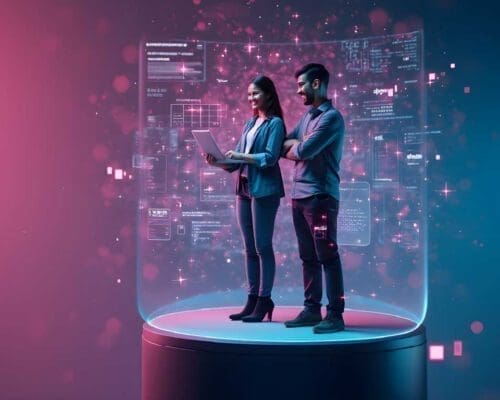Resources
Keeping you up to date with the latest advances in the industry, product releases, case studies and more
Filter by
Resource Type
Topic
Industry

To Achieve AI Success, You Need to Demonstrate Strong AI ROI
To make your AI transformation a success, leaders need to be able to demonstrate strong AI ROI. We’re arguably in Gartner’s ‘trough of disillusionment’. Without measurable AI ROI, it can be challenging to justify AI investments to stakeholders and customers.

AI-Powered Agents Help Humans Help Humans
You might think that the general public, including your customers, is chomping at the bit to have their issues resolved by a shiny, new, fully automated AI contact center. The reality, of course, is not so positive.

The Future of CX Lies in ‘Human-Centered AI’
People value the human element, even when human outputs may be less consistent, or even of lower quality, than the AI alternative. Authenticity counts.

Three Transformative CX Predictions for 2025
New year, new CX challenges. 2025 has just begun and it’s already raising questions about the future of Customer Experience, particularly regarding AI applications. In this blog, we discuss our 2025 CX predictions.

Agentic AI is All the Rage: Does it Live Up to the Hype?
We all know AI; it’s the adjective ‘Agentic’ that interests us. What does ‘Agentic’ mean? Has the future arrived and taken all of us by surprise?

AI Has Transformed the Future of the Predictive Dialer
Predictive dialers have been a staple of the contact center for decades. In the age of AI, however, the game has changed. Predictive dialers are starting to feel dated in an omni-channel world, where channels such as email, SMS, and social media have taken precedence over voice for outbound communications.

Crafting AI Intelligent Customer Journeys
Customer Experience (CX) begins and ends with the customer journey. Which pathways they travel down to which outcomes, and to which solutions. AI is set to transform the customer journey forever.

AI Will Revolutionize Customer Segmentation
Delivering a great customer experience requires you to address each section of this breakdown with equal attention. A failure across any of these channels means letting down one-third of your customer base. That’s a huge proportion.

The Future of AI Customer Experience in an Uncertain Climate
A recent report from the US Census Bureau highlighted that AI adoption has been slower than expected, with only 5% of firms adopting AI in some capacity. This report only reveals the scale of the opportunity.

Agent AI Copilots Are the Future of the Contact Center
Customer Experience leaders have been experimenting with AI-powered strategies to enhance the productivity of individual agents. Out of these experiments has emerged the agent AI copilot.

AI Will Enable Contact Center Automation at Every Level of Operation
The contact center will always depend on human intelligence, but that doesn’t mean there’s no place for full AI contact center automation.

AI Agent Assist Will Transform the Contact Center Forever
The AI revolution is in full steam now, and it’s quickly becoming obvious which AI applications are set to transform businesses, and which are dead in the water. One application that has emerged head and shoulders above the rest is AI agent assist.